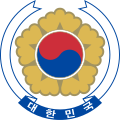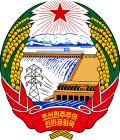| Unification Pavilion | |
 The Unification (Tongil) pavilion | |
| Korean name | |
|---|---|
| Chosŏn'gŭl | 통일각 |
| Hancha | 統一閣 |
| Revised Romanization | Tongilgak |
| McCune–Reischauer | T'ongilgak |
The Unification Pavilion is a venue for peace talks between North and South Korea. The building is situated in the Joint Security Area on the North side of the Military Demarcation Line bisecting the area. [1] Before the Korean War,the village,named Panmunjom,consisted of householders.



